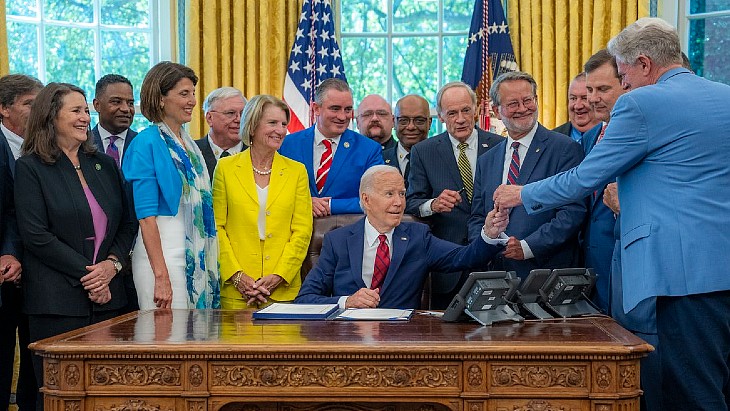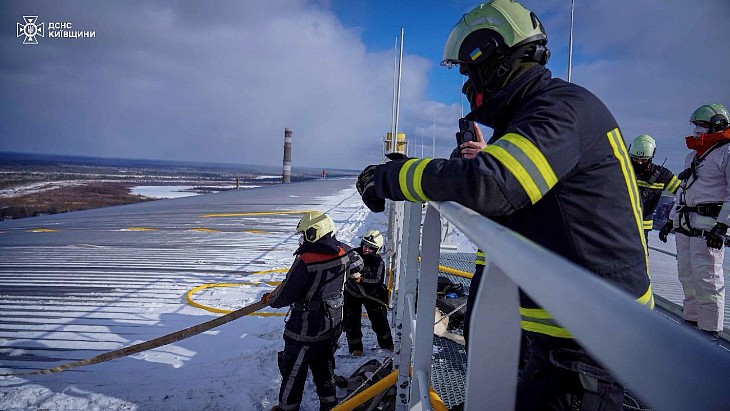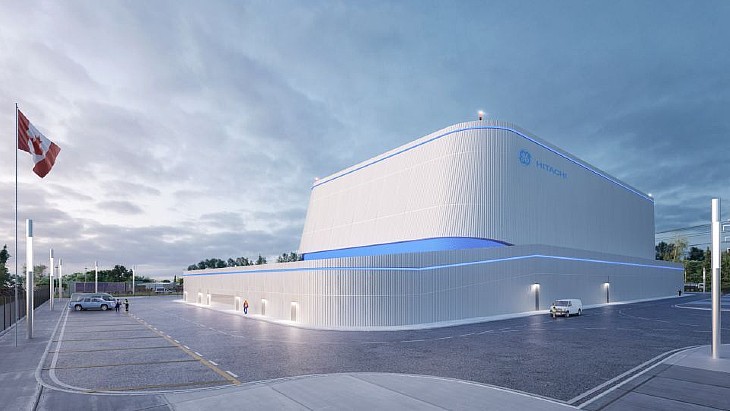Darlington to supply molybdenum-99
.jpg)
BWXT in May announced that it had developed an innovative process to produce Mo-99 for use in newly designed Tc-99m generators that are now in commercial development. A key element of the process includes the irradiation of molybdenum targets, for which BWXT requires a long-term, reliable and continuous supply. BWXT yesterday announced it had selected OPG subsidiary Canadian Nuclear Partners (CNP) to provide irradiation services and would now negotiate a definitive agreement.
Medical isotope targets can be inserted and removed from the Darlington reactors while they remain in operation, allowing for a continuous supply of the material. Use of Candu reactors - which use natural uranium fuel - also removes the proliferation risk associated with the conventional production of Mo-99 by the irradiation of enriched uranium targets.
Subject to regulatory approvals, production of Mo-99 is expected to begin at Darlington by the end of 2019.
Mo-99 is used to generate Tc-99m, which is the world's most widely used radionuclide for medical imaging. Both Tc-99m and the Mo-99 it is generated from have short half-lives and need to be used quickly once they are produced, so a constant, stable supply of them is needed. Mo-99 has primarily been produced by a limited number of research reactors, and North America has been without a large-scale domestic supply of the radioisotope since 2016, when production of Mo-99 in Canada's NRU research reactor ceased ahead of the reactor's retirement earlier this year.
Glenn Jager, CNP president, said the collaboration would "save lives" across North America by giving patients quicker access to vital medical treatments.
"Canada will once again be a leader in producing this critical medical tool that is used in over 30 million medical procedures across the globe each year," he said.
BWXT CEO Rex Geveden said the company expected its new technology to make diagnostics more accessible while reducing production and waste costs.
"We have a proud history of working with OPG and look forward to joining with CNP in providing North America with a domestic supply of this life-saving tool," he said.
John MacQuarrie, president of BWXT Canada Ltd, added: "As a long-term supplier of isotopes, OPG demonstrates the numerous advantages nuclear technology offers our society, from clean and affordable power to life-saving technology. Our relationship with OPG dates back to the 1960s with the supply of power generation equipment and services, and today we are proud to strengthen our legacy of collaboration to bring this product to market."
The new Tc-99m generators are designed to integrate naturally into the current radiopharmacy supply chain and provide the same concentration of Tc-99m that is currently available from generators using fission-based Mo-99 made from uranium targets. BWXT has previously said it expects to have sufficient production capacity to satisfy all North American demand for Mo-99.
The four Candu reactors at Darlington are currently undergoing a phased CAD12.8 billion (USD9 billion) project refurbishment project which is scheduled for completion by 2026. Work formally began on Darlington 2, the first unit to be refurbished, in October 2016 and is now past the halfway mark. Refurbishment of unit 3 is scheduled to begin after completion of work on unit 2 to allow the implementation of lessons learned. The refurbishment will enable the plant to operate for a further 30 years.









_88592.jpg)
_66488.jpg)

